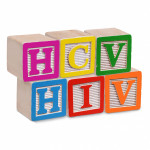Worldwide, alcohol use disorder (AUD) is apparently much more common among people with HIV compared with the general population. This is the signature finding of the first-ever systematic review and meta-analysis to estimate the prevalence of problematic use of alcohol among HIV-positive individuals around the globe.
AUD, otherwise known as alcoholism, refers to the continuous use of alcohol despite its causing harm and despite repeated attempts to cut back on drinking.
Problematic drinking is of particular concern for people with HIV because research has indicated that heavy alcohol use is associated with poorer adherence to daily antiretrovirals as well as harmful immune activity. AUD may also exacerbate HIV’s negative impact on cognitive function and overall quality of life.
As for HIV-positive people who are coinfected with hepatitis C virus, experts discourage any use of alcohol, especially if an individual has advanced liver damage, because of how drinking can exacerbate hep C’s harm to the liver. Even in people without hep C, heavy alcohol use can lead to cirrhosis and liver cancer.
Bereket Duko, of the College of Medicine and Health Sciences at Hawassa University in Ethiopia, and colleagues conducted a new systematic review and meta-analysis on AUD prevalence among people with HIV. Their findings were published in Substance Abuse, Treatment, Prevention and Policy. Duko and his team looked at 25 studies conducted in both developing and developed nations and included data on 25,154 participants of those studies in their final analysis.
Published between 2006 and 2019, the papers included participant populations that ranged in size from 108 people in a study in Brazil to 8,567 participants in a U.S. study. Five of the papers were from the United States, three were from Brazil, one each was from Russia, India and Nepal and 11 were from African nations.
To define someone as having AUD, 23 of the studies used the Alcohol Use Disorders Identification Test (AUDIT), while the other two relied on the Composite International Diagnostic Interview (CIDI).
The study authors estimated that the overall prevalence of AUD among people with HIV was 30%, including 27% among men and 14% among women. That said, these figures varied across the studies analyzed.
By comparison, previous studies have estimated that the AUD prevalence in the general population in the United States, Europe and Australia is 14%, 11% and 12%, respectively.
The new paper indicates that AUD prevalence in the HIV population was 42% in developed nations and 25% in developing nations. The difference between these two figures was statistically significant, meaning it is likely not driven by chance. These findings, the study authors noted, are in line with a previous study on alcohol misuse among people with HIV that found a prevalence of AUD of 29% in developed nations and 16% in developing nations.
“[T]he variation in the socioeconomic status of the countries, cultural differences, the accessibility and availability of alcoholic beverages, variation in the number of studies in developed countries and the study setting capability of investigations might contribute to the difference in the prevalence of alcohol use among [people with HIV],” the study authors wrote.
In the pool of studies that used AUDIT to define AUD, the prevalence of the condition among people with HIV was 32%, compared with a much lower figure of 14% in the studies that relied on CIDI. This difference is likely driven by the fact that AUDIT is meant to screen for AUD among those who do not necessarily display symptoms of problematic alcohol use, while CIDI is meant for people who do have such symptoms, thus narrowing the pool.
Because of CIDI’s narrower definition of AUD, the study authors noted that the AUDIT questionnaire may overestimate the prevalence of the substance use disorder in the HIV population.
Looking just at the 19 studies they deemed to provide high-quality evidence, the paper’s authors found that the AUD prevalence was 29%, compared with 33% in the six moderate or low-quality studies. The difference between these figures, however, was not statistically significant, meaning it could have been driven by chance.
Why the overall stark difference in AUD prevalence between people with and without HIV? The paper’s authors theorized that HIV-positive people may use alcohol to cope with the psychological distress of living with the virus.
“Screening and appropriate management of AUD among [people with HIV] is recommended,” the study authors concluded. “Further strong studies with representative sample size across the globe [are] warranted to strengthen our findings. Furthermore, further studies focusing on the magnitude of AUD across different countries as well as gender [are] warranted.”
For those people with HIV considering treatment for AUD, note that options beyond traditional 12-step programs are available. Monthly injections of extended-release naltrexone, a treatment also used for opioid use disorder, helped HIV-positive participants in a recent trial cut back on their drinking. Another study found that naltrexone helped HIV-positive people recently released from prison reduce their overall substance use.







3 Comments
3 Comments